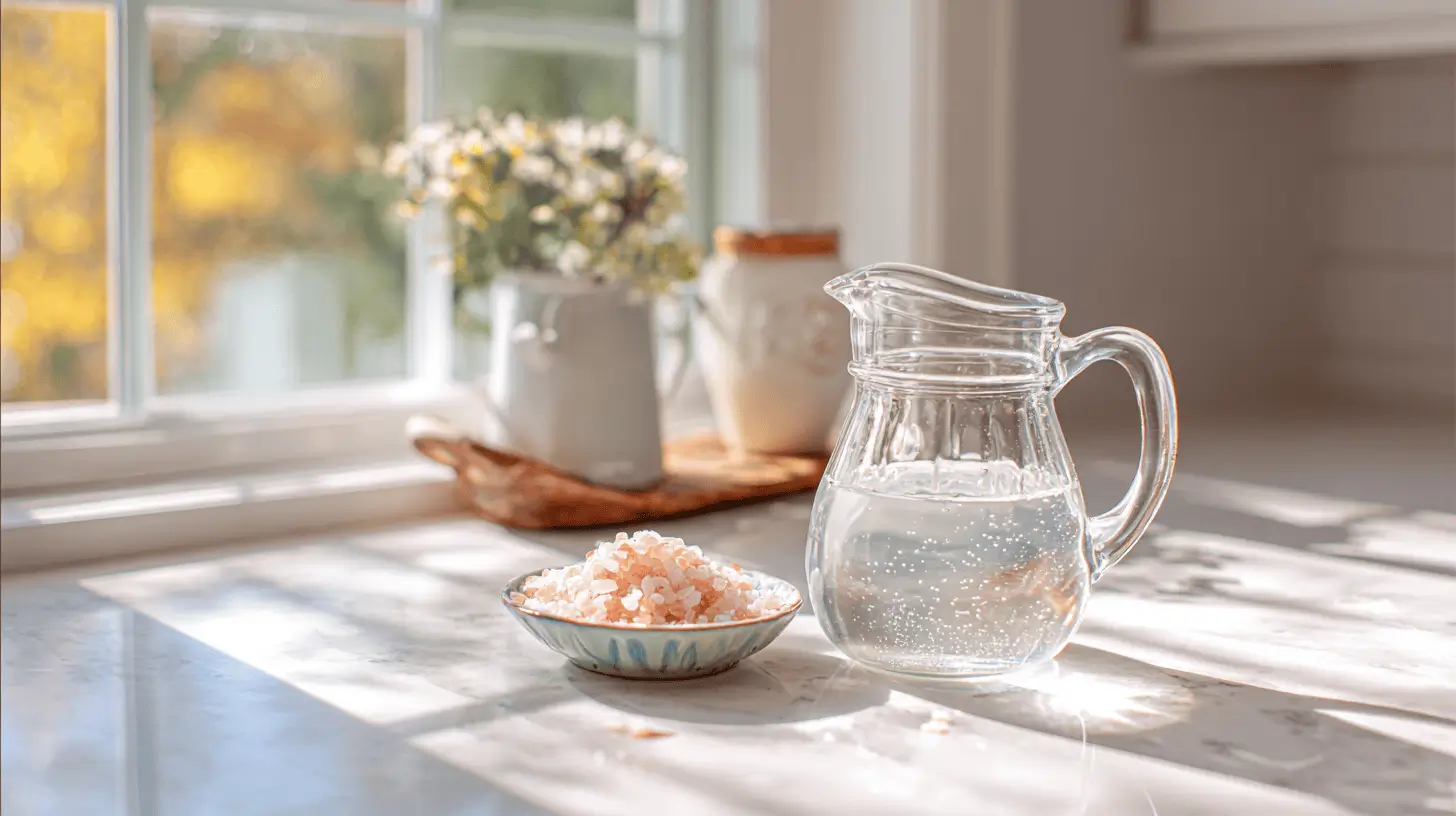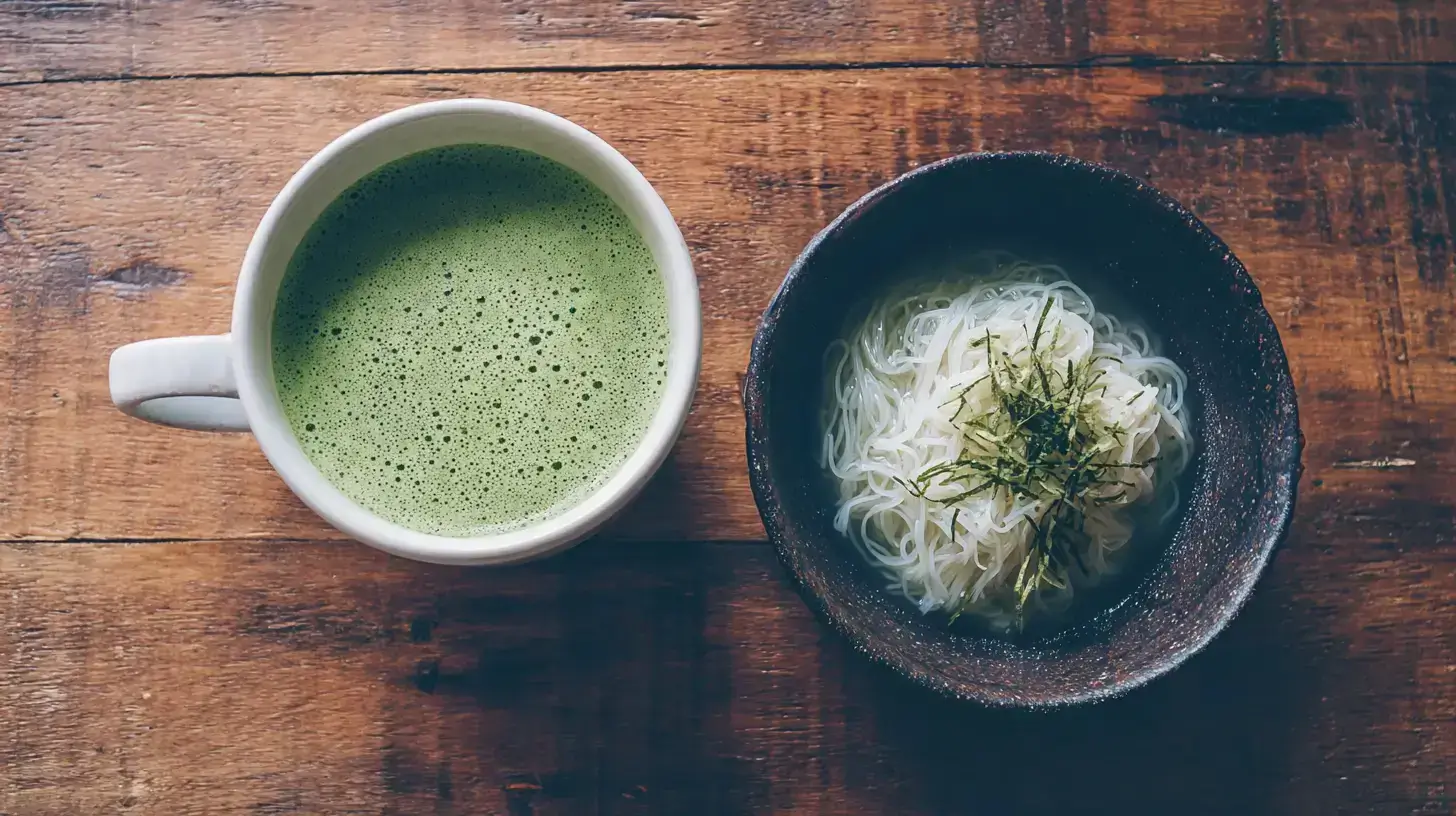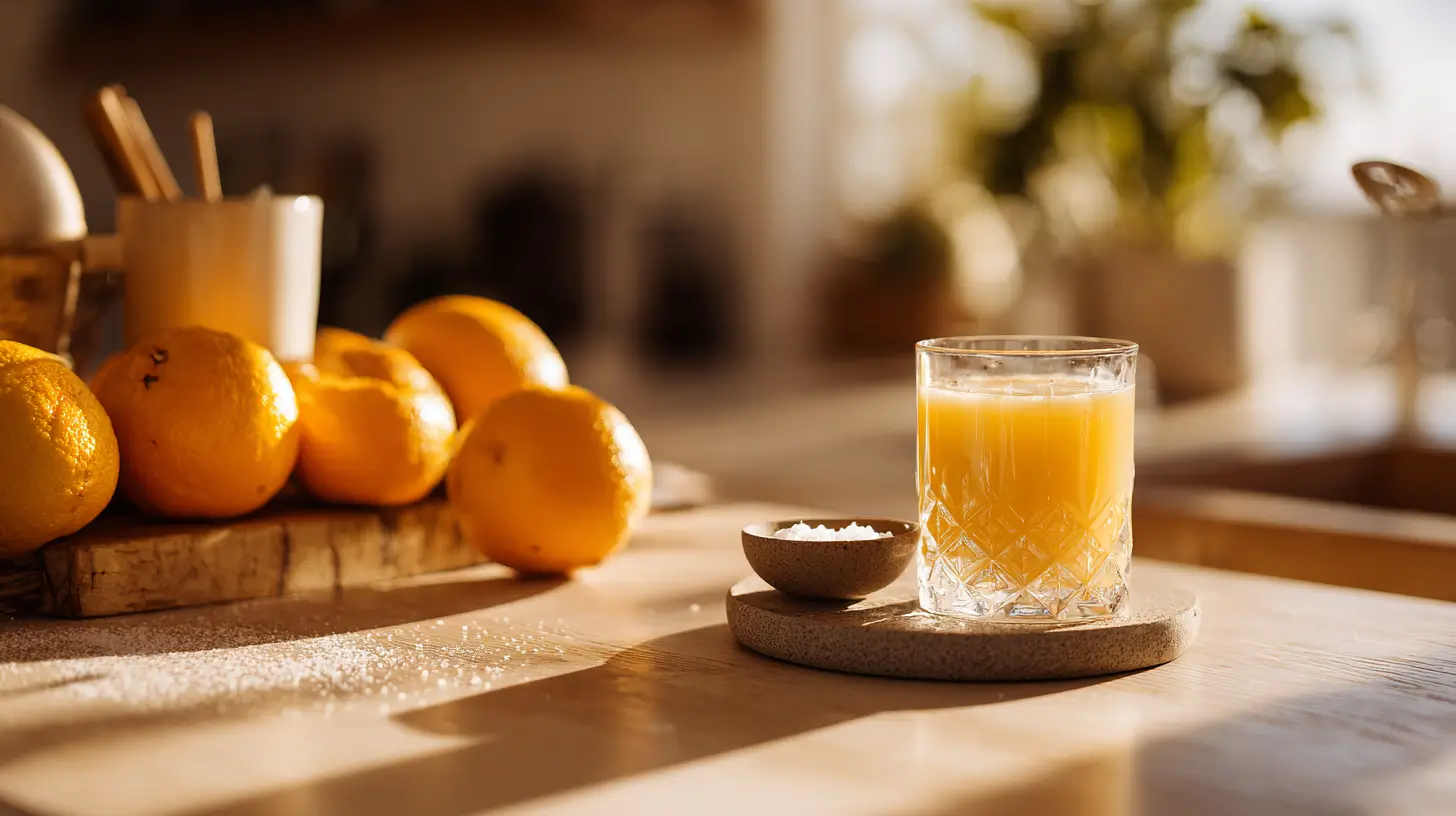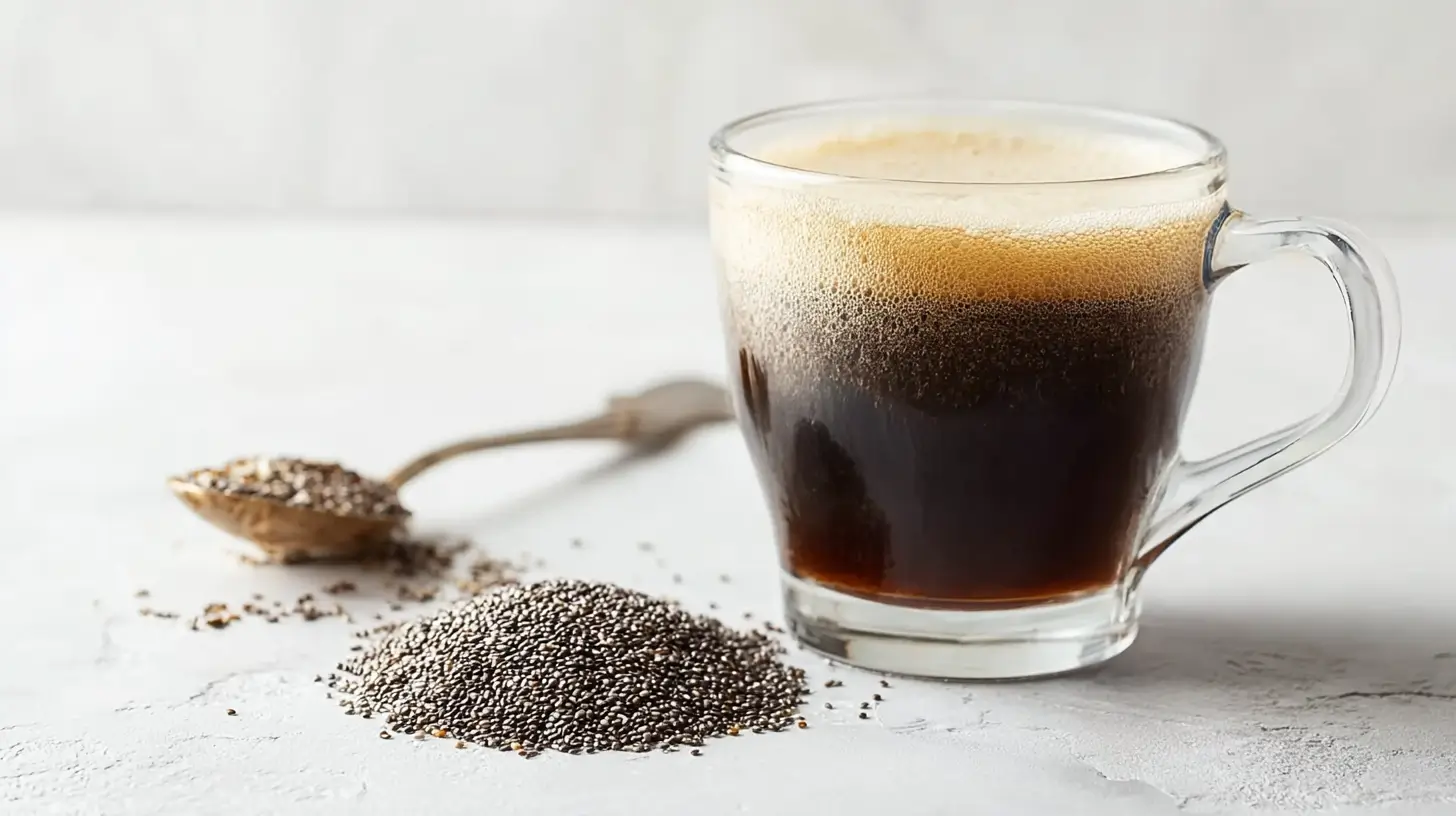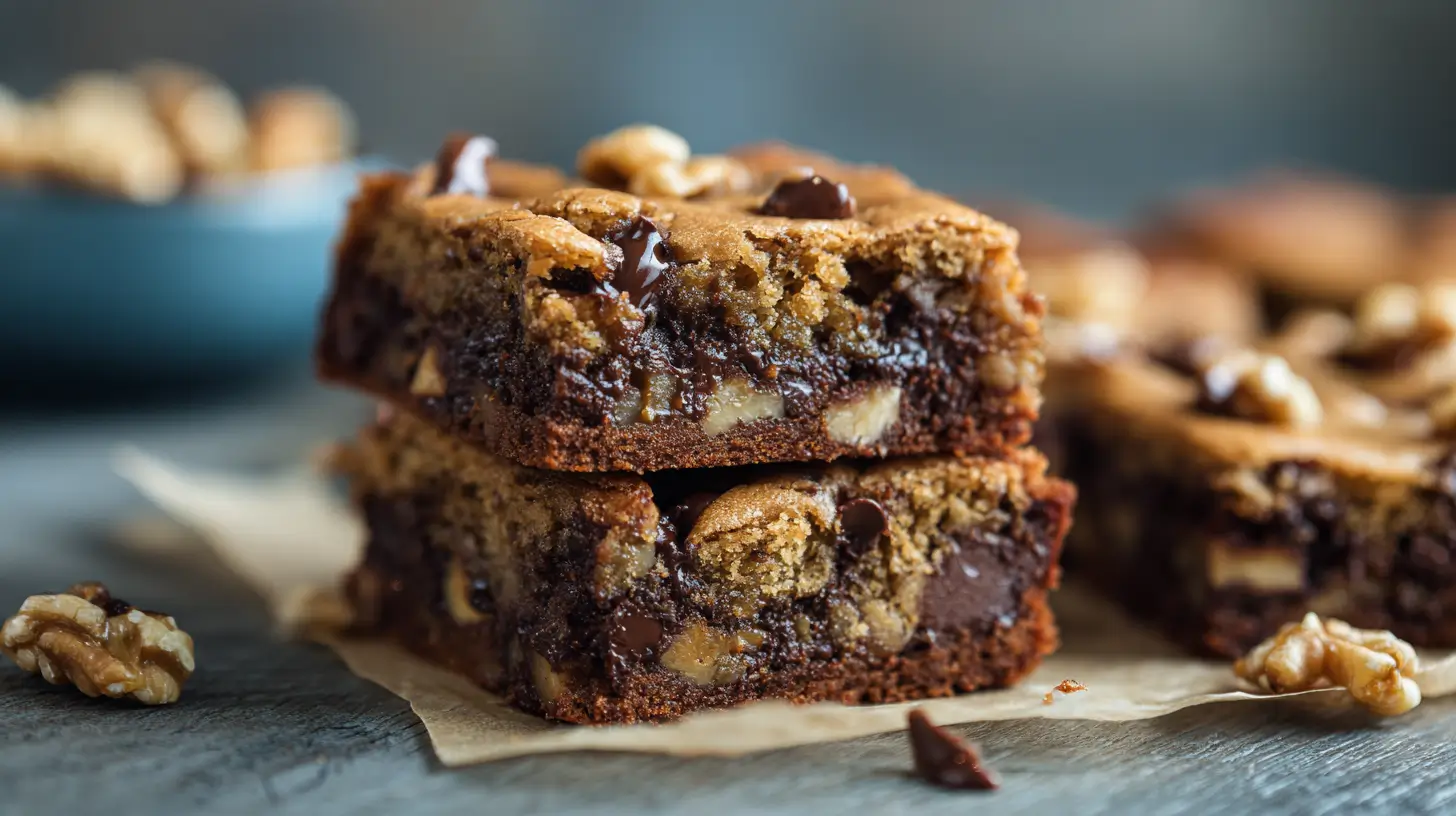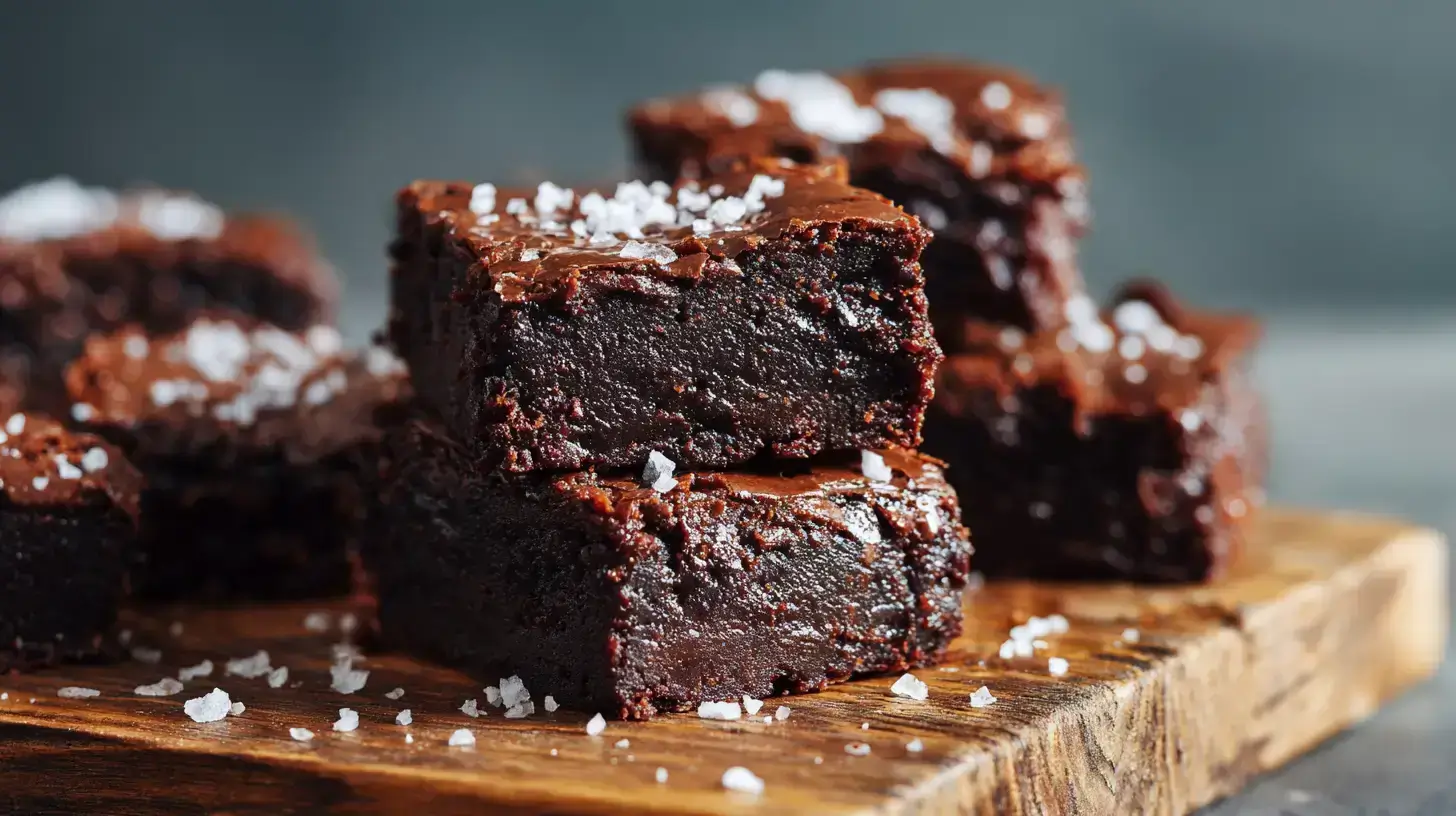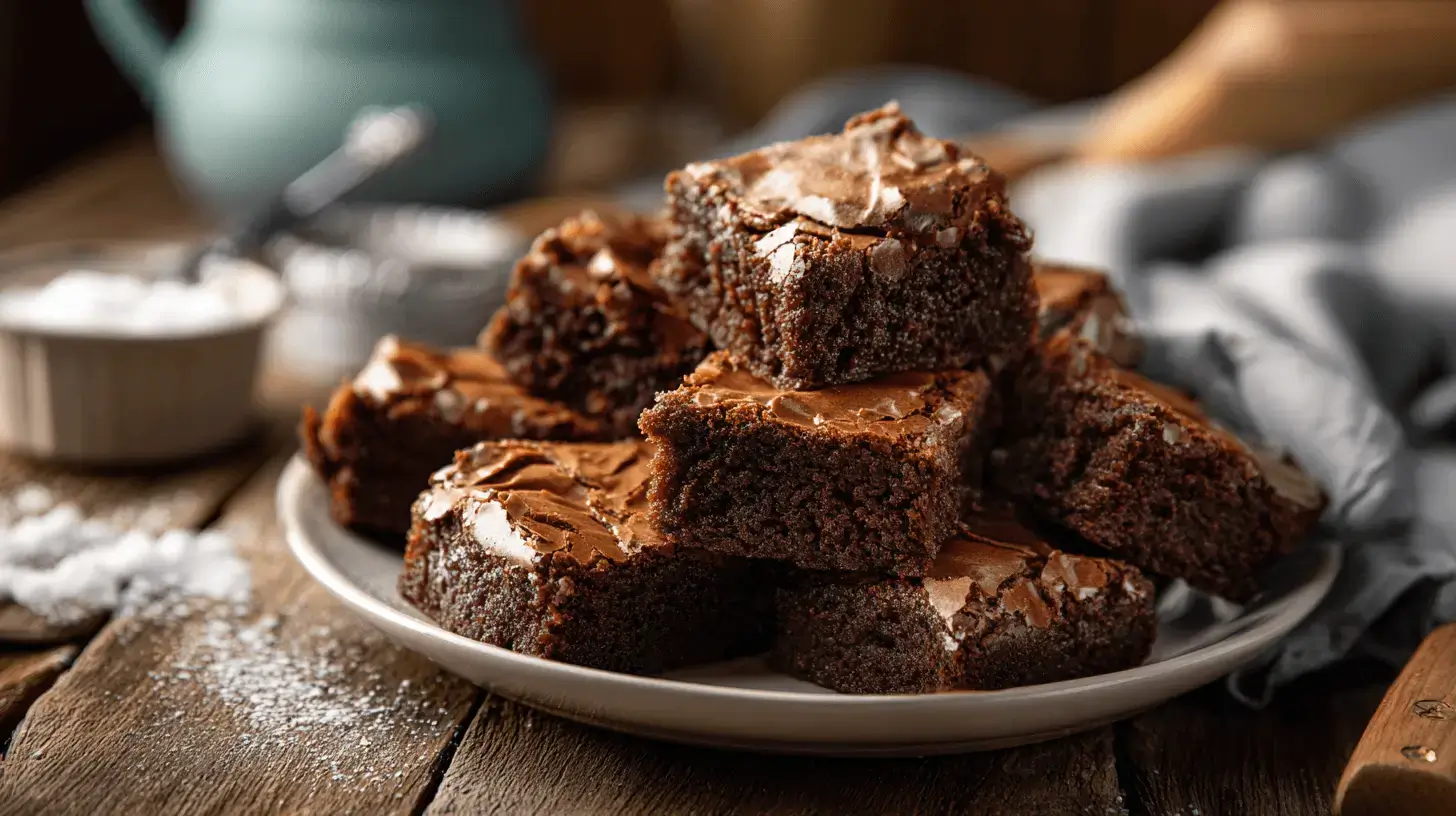If you’ve been Googling “salt water flush for weight loss,” you’ve probably seen promises of quick results and just as many conflicting recipes. Some claim it’s a natural way to lose pounds overnight. Others warn it’s risky, even dangerous. Having spent years in my Ohio kitchen testing health trends (with my Ragdoll cat Luna “supervising”), I’ve learned that not all advice online is created equal. In this guide, we’ll unpack what a salt water flush really does, why the weight loss isn’t what you think, and most importantly how to do it as safely as possible, if at all. To do that, I’ve not only tested it myself but also cross-referenced the information with guidelines from leading health authorities to ensure you get the full picture.
Table of Contents
My Personal Test of the Salt Water Flush for Weight Loss
Like many, my search for information on the salt water cleanse revealed a confusing mix of bold promises, warnings of miserable bathroom marathons, and recipes that contradicted each other completely. I was no different. One rainy afternoon in my Ohio kitchen, with Luna the Ragdoll cat perched on the counter like a tiny health inspector, I decided to test it for myself.
What intrigued me wasn’t just the promise of a quick fix it was the huge gap between what bloggers claimed and what nutrition experts warned. Some swore it was a natural detox that could reset your body. Others cautioned that it could throw your electrolytes into chaos. The more I read, the more I realized there was one thing missing from the conversation: clear, safety-focused information.
Print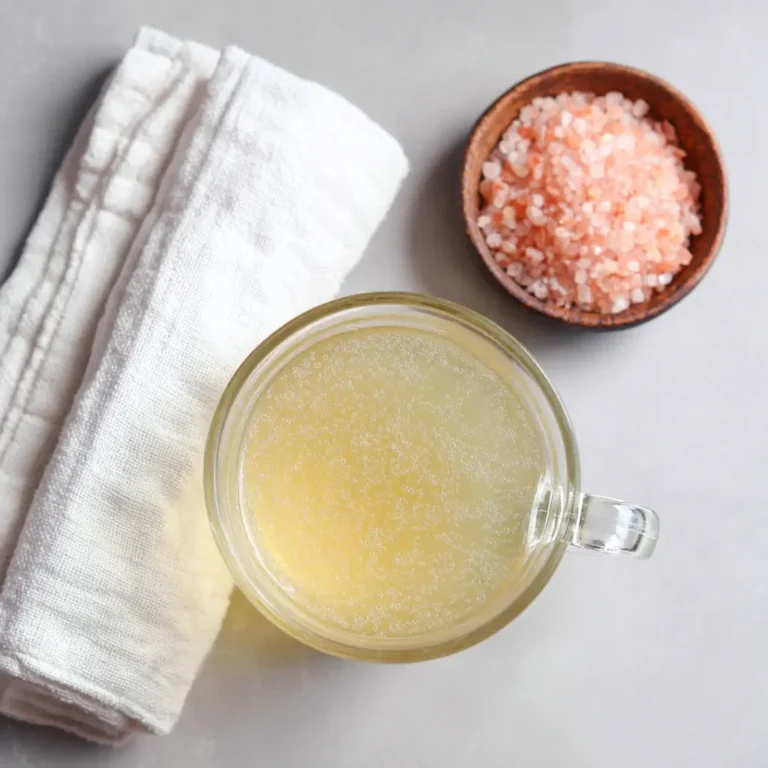
Salt Water Flush for Weight Loss: The Safety-First Guide You Need to Read
A safety-conscious salt water flush recipe for short-term bloating relief, using non-iodized sea salt and warm water.
- Total Time: 5 minutes
- Yield: 1 serving 1x
Ingredients
2 teaspoons non-iodized sea salt or pink Himalayan salt
1 liter warm filtered water
Instructions
1. Warm the water until slightly above room temperature.
2. Stir in salt until fully dissolved.
3. Drink the mixture within 5 minutes on an empty stomach.
4. Stay near a bathroom for the next few hours.
5. Rehydrate with fresh water or an electrolyte drink.
Notes
Do not attempt if you have high blood pressure, kidney issues, or are pregnant.
Always rehydrate after a flush.
This method causes temporary water weight loss, not fat loss.
- Prep Time: 5 minutes
- Cook Time: 0 minutes
- Category: Detox Drink
- Method: Mixing
- Cuisine: Wellness
Nutrition
- Serving Size: 1 glass
- Calories: 0
- Sugar: 0g
- Sodium: 2320mg
- Fat: 0g
- Saturated Fat: 0g
- Unsaturated Fat: 0g
- Trans Fat: 0g
- Carbohydrates: 0g
- Fiber: 0g
- Protein: 0g
- Cholesterol: 0mg
That’s why this article exists to cut through the noise and give you the facts. I’ll share exactly how the flush is supposed to work, why most “weight loss” from it is temporary, and how to avoid the most dangerous mistakes people make. And if you’re here because you want to feel lighter or less bloated, we’ll also talk about safer, proven drinks like my cortisol cocktail for weight loss or the refreshing blue tonic weight loss recipe that can support your health without risky side effects.
Why This Article Is Different Trust Over Trends
A salt water flush for weight loss isn’t magic—it’s basic biology. When you mix non-iodized sea salt with warm water and drink it on an empty stomach, the salt concentration becomes higher than what your body normally processes. This difference draws water into your intestines, a process known as the osmotic effect. The result is rapid bowel movements that clear waste from your digestive tract.
Learn more: For a detailed explanation of the osmotic effect, see this educational resource from Britannica: Osmosis – Britannica.
This isn’t about chasing a one-day fix. It’s about making informed decisions for your body. By the end, you’ll know whether this flush belongs in your wellness routine or in your “glad I researched first” folder.
How a Salt Water Flush Works
The Osmotic Effect Explained Simply
A salt water flush for weight loss isn’t magic it’s basic biology. When you mix non-iodized sea salt with warm water and drink it on an empty stomach, the salt concentration is higher than what your body normally processes. This creates an osmotic effect, meaning water gets pulled into your intestines. The result? Rapid bowel movements that clear waste from your digestive tract.
Here’s the thing: the “weight” you lose isn’t body fat it’s mostly water and stool. That’s why, after a meal or two, the number on the scale often bounces right back. If your real goal is sustainable weight control, you’ll have far better results from everyday habits like drinking lemon balm tea or adding more fiber to your diet.
For those chasing bloating relief, this flush can deliver short-term results but it comes with real risks, especially if the salt-to-water ratio is too high.
The Recipe Confusion & Dangerous Concentrations
Search online and you’ll find dozens of variations, and that’s the problem. Some recommend mild amounts of salt; others give dangerously concentrated instructions that can cause nausea, dizziness, or worse.
Here’s a side-by-side look at the two extremes versus the safer option:
| Recipe Type Found Online | Salt Amount | Water Amount | Risk Level |
|---|---|---|---|
| High-Risk Recipe | 1 tbsp (3 tsp) | 16 oz (475 ml) | Very High — electrolyte imbalance, dehydration. High risk of acute side effects like nausea and dizziness. |
| Moderate Recipe | 2 tsp | 1 liter (33.8 oz) | Lower — but still not without risk |
The takeaway? Stronger isn’t better it’s more dangerous. If you’re still tempted to try it, stick to the safer ratio and make sure you’re healthy enough for it.
For gentler digestion support, consider natural hydration boosters like chia seed water, which delivers fiber and omega-3s without flushing your system in one go.
The Safer Salt Water Flush Method
Safety-Conscious Recipe & Step-By-Step Guide
If you’ve read this far, you already know that the salt water flush for weight loss is more about temporary relief than lasting fat loss. But if you decide to try it anyway, this is the safest concentration widely used:
Ingredients
- 2 teaspoons non-iodized sea salt (or pink Himalayan salt)
- 1 liter (about 33.8 oz) warm filtered water
Instructions
- Warm your water until it’s just above room temperature not hot enough to burn.
- Stir in the salt until fully dissolved. The solution should be slightly briny, not overpowering.
- Drink the entire mixture within 5 minutes on an empty stomach, preferably first thing in the morning.
- Stay near a bathroom for the next few hours.
- Rehydrate afterward with fresh water or an electrolyte drink my electrolyte mocktail recipe works perfectly.
Why non-iodized salt? Iodine can irritate the stomach in large amounts, and the goal here is osmotic action, not added nutrients. Pink Himalayan salt is also lower in processed additives, making it a better choice for sensitive digestion.
What to Expect — An Hour-By-Hour Timeline
Everyone’s body reacts differently, and while most people will simply experience multiple trips to the bathroom, some may feel lightheaded or unwell. If you notice severe cramping, persistent vomiting, or signs of dehydration, stop immediately and seek medical attention.
Learn more: See the NHS guide on recognizing and treating dehydration for detailed symptoms and treatment steps.
- 0–15 minutes – You may feel a fullness in your stomach.
- 15–30 minutes – Mild gurgling or cramping as the salt water moves through the intestines.
- 30–60 minutes – First bowel movement; stools may be loose or watery.
- 1–2 hours – Multiple trips to the bathroom; continue sipping plain water between visits.
- 2–4 hours – Activity slows down; some fatigue is normal.
- After 4 hours – Rehydration is key. Pair with a light meal rich in fiber, like my apple peel tea to soothe digestion.
Remember: If you experience dizziness, severe cramping, or irregular heartbeat, stop immediately and seek medical attention. Those are signs your body’s electrolyte balance has been disrupted.
Risks, Side Effects & Safer Alternatives
The Full List of Side Effects & Who Should Avoid It
A salt water flush for weight loss might seem harmless, but the side effects can be serious, especially for people with underlying health conditions. Common reactions include:
- Dehydration from rapid fluid loss
- Nausea or vomiting from high salt intake
- Electrolyte imbalance (low potassium, magnesium, sodium shifts)
- Dizziness or lightheadedness
- Stomach cramping and discomfort
You should avoid this flush entirely if you have:
- High blood pressure or heart disease
- Kidney problems or a history of kidney stones
- Digestive disorders such as Crohn’s disease or ulcerative colitis
- Are pregnant or breastfeeding
These conditions make the sudden electrolyte changes more dangerous. Trusted organizations like the American Heart Association and the National Kidney Foundation warn against excessive salt intake, especially in concentrated forms like this.
Better Ways to Support Digestive Health & Manage Weight
If your goal is to feel lighter, reduce bloating, or keep your digestion regular, there are safer and more sustainable options:
- High-fiber foods: Think oats, berries, leafy greens, beans. Fiber naturally sweeps your intestines clean over time without depleting electrolytes.
- Probiotic-rich foods: Yogurt, kefir, and fermented vegetables help balance gut bacteria for smoother digestion.
- Gentle detox drinks: My detox island green smoothie offers hydration, vitamins, and minerals without harsh flushing.
- Hydration habits: Aim for 8–10 cups of water daily. Infuse with lemon, cucumber, or herbs for added flavor.

For a mineral-rich twist, try my pink salt weight loss recipe. It delivers trace minerals without the extreme concentrations of a full flush, making it a far safer daily option.
These alternatives won’t deliver an overnight “drop,” but they work with your body rather than shocking it making them far better for your long-term health.
Conclusion
A salt water flush for weight loss delivers quick, temporary results but at the cost of potential discomfort and real health risks. For most people, the short-term drop on the scale isn’t worth the possible dehydration, electrolyte imbalance, or digestive distress.
If you do try it, stick to the safer recipe and hydrate well afterward. But if lasting health, energy, and weight control are your goals, focus on daily habits that nurture your body like fiber-rich foods, probiotic drinks, and balanced hydration.
Your body works best when it’s supported, not shocked. The right approach will keep you feeling lighter and healthier without the bathroom marathons. For more evidence-based wellness guides and healthy recipes, follow us on Pinterest and Facebook.
Frequently Asked Questions
Is the weight loss from a salt water flush permanent?
No. The scale drop you see is mostly water and waste, not fat. Once you eat or drink again, your weight will likely return to normal.
How often can I do a salt water flush?
It’s not recommended to do it regularly. At most, it should be an occasional choice for short-term relief and only if you’re healthy enough for it.
What if the salt water flush doesn’t work?
It may mean your digestive system processes fluids differently, or the salt ratio wasn’t correct. Instead of repeating it, consider high-fiber meals or probiotic drinks for more consistent results.
What’s the best alternative for bloating relief?
Gentle options like lemon balm tea, chia seed water, or a fiber-rich smoothie can help ease bloating without the risks of rapid fluid loss.
